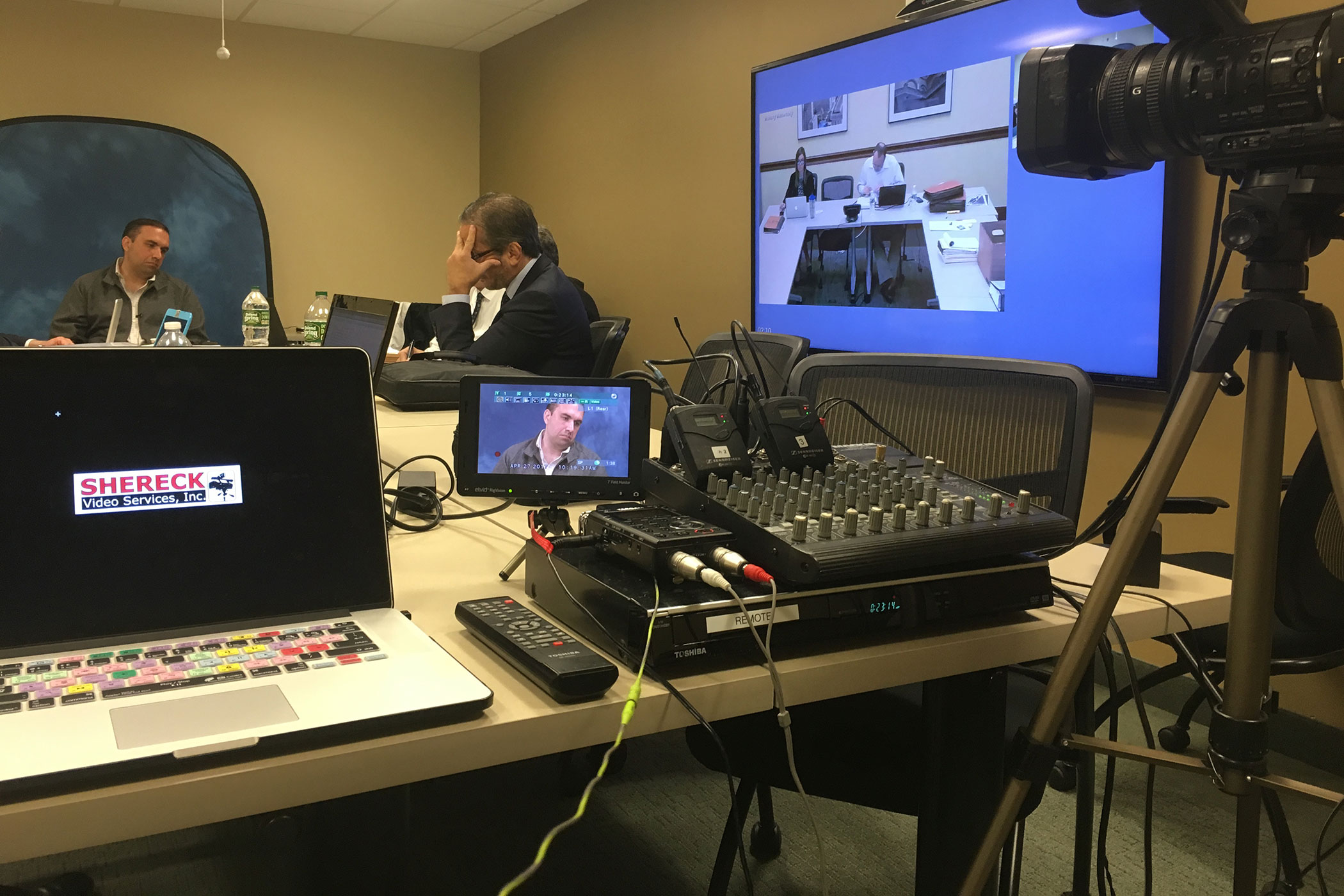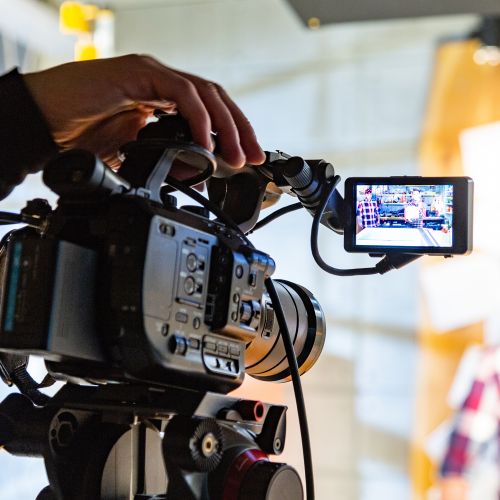The Ultimate Overview to Legal Videography for Lawyer and Legal Teams
The Ultimate Overview to Legal Videography for Lawyer and Legal Teams
Blog Article
Looking Into the Mechanisms of Lawful Videography: Introduction Its Operation in Shielding Genuine Visual Testimony for Judicial Procedures
In the realm of judicial procedures, the function of lawful videography stands as a foundation in preserving and presenting visual proof. As technology proceeds to advancement, the mechanisms behind lawful videography have actually ended up being significantly detailed, offering an important layer of credibility to statements caught on video. By diving into the functional ins and outs of legal videography, one can reveal the meticulous processes that safeguard the honesty of visual evidence offered in court rooms - Legal Videography. This expedition not only loses light on the historical evolution of lawful videography yet additionally hints at the future fads that might additionally transform how aesthetic statements are supported in the realm of justice.
Historic Evolution of Legal Videography
Taking a look at the historical progression of lawful videography discloses a considerable transformation in the catching and discussion of visual evidence within the legal landscape. In the past, legal proceedings heavily relied upon written pictures and records to document occasions and offer proof. Nevertheless, with the development of video clip technology, the legal industry witnessed a paradigm shift in exactly how aesthetic statement was recorded and provided.
The advancement of lawful videography can be traced back to the late 20th century when improvements in video clip recording equipment made it a lot more available for usage in courts. This technical development not only boosted the accuracy and reliability of aesthetic proof but additionally changed the method cases existed to courts and juries (Legal Videography). Lawyers began to identify the influential power of video clip recordings in conveying feelings, subtleties, and non-verbal signs that composed records or photos alone could not catch efficiently

Technology Advancements in Video Clip Paperwork
What essential technological advancements have changed video paperwork in the legal field? The legal field has seen significant innovations in video documentation innovation that have improved the credibility and reliability of visual proof in judicial process. Among the essential advancements is high-definition (HD) video recording capabilities, which provide crystal-clear images and sharp information that are crucial for precisely recording testimonies, facial expressions, and various other aesthetic cues. In addition, the combination of timestamping and metadata features in video clip paperwork tools has actually allowed accurate paperwork of when and where the video was tape-recorded, making certain the integrity of the evidence provided in court.
In addition, improvements in video security and watermarking modern technologies have actually boosted the safety and tamper-proof nature of video clip evidence, protecting it versus unapproved alterations or meddling. Moreover, the advent of cloud storage options and remote accessibility capabilities has streamlined the storage space, retrieval, and sharing of video clip evidence, helping with smooth cooperation among lawful specialists and ensuring efficient accessibility to vital visual testimonies when needed. These technical advancements in video documentation have unquestionably transformed the lawful field, improving the precision, integrity, and admissibility of aesthetic evidence in judicial procedures.
Duty of Legal Videographers in Court Settings
The advancement of video clip paperwork innovation in the legal area has actually demanded an essential function for lawful videographers in court setups, making certain the honesty and integrity of aesthetic statements provided throughout judicial proceedings. Lawful videographers play a basic function in recording and protecting exact aesthetic evidence that can be pivotal in lawsuit. Their duty reaches setting up tools, videotaping procedures, and generating top notch videos that accurately reflect the events in the court room.
Furthermore, lawful videographers typically work closely with lawful groups to make sure that the video evidence straightens with the instance's needs and can be successfully provided in court to sustain the legal disagreements being made. Overall, the role of lawful videographers in court room settings is important in supporting the principles of justice and ensuring the transparency of legal process. Legal Videography.

Ensuring Admissibility and Stability of Video Proof
To keep the reliability of visual evidence presented in lawful process, ensuring the admissibility and stability of video proof is a vital responsibility for lawful videographers. Admissibility describes the approval of proof by the court, and for video evidence to be acceptable, it has image source to meet particular standards. Legal videographers play a crucial duty in making certain that the videos they capture conform with the guidelines of evidence, such as reliability, authenticity, and importance.
Integrity of video evidence entails keeping the originality and precision of the video from the time it is taped until it is provided in court. This consists of securely keeping the video data, recording the chain of custodianship, and avoiding any meddling or modifications. Lawful videographers must comply with rigorous methods to assure the honesty of the video clip proof and protect against any kind of obstacles to its authenticity.
Future Trends in Legal Videography
Provided the enhancing reliance on modern technology in lawful process, legal videographers are poised to welcome cutting-edge innovations forming the future of visual testimony capture and discussion. One of the popular fads on the perspective is the assimilation of online reality (VIRTUAL REALITY) and enhanced reality (AR) modern technologies right into lawful videography. These innovations have the prospective to revolutionize how aesthetic proof exists in courts, permitting juries and courts to immerse themselves in the scene of the criminal offense or occurrence.
Additionally, using expert system (AI) algorithms for video clip evaluation is expected to simplify the procedure of reviewing and assessing huge amounts of video footage. AI can assist in identifying vital minutes, anomalies, and patterns within videos, improving the efficiency of lawful investigations.
Final Thought
To conclude, lawful videography has played a crucial duty in offering genuine visual proof for judicial process. Through technical developments and the know-how of lawful videographers, the integrity and admissibility of video proof are made certain in courtroom settings. As legal videography remains to progress, it will certainly be vital to promote standards that keep the accuracy and dependability of aesthetic testimony for the future of lawful procedures.
Taking a look at the historical development of lawful videography reveals a considerable transformation in the catching and discussion of visual proof within the lawful landscape.The evolution of video clip paperwork innovation in the lawful field has actually demanded an essential duty for lawful videographers in courtroom settings, guaranteeing the stability and integrity of visual testaments provided throughout judicial procedures. Additionally, legal videographers frequently work carefully with lawful groups to guarantee that the video clip proof aligns with the instance's needs and can be effectively presented in court to support the legal disagreements being made.To maintain the reliability of visual proof provided in legal proceedings, guaranteeing the admissibility and stability of video clip proof is an essential responsibility for lawful videographers. As lawful videography go to website proceeds to evolve, like this it will certainly be important to promote standards that keep the precision and dependability of visual testimony for the future of lawful proceedings.
Report this page